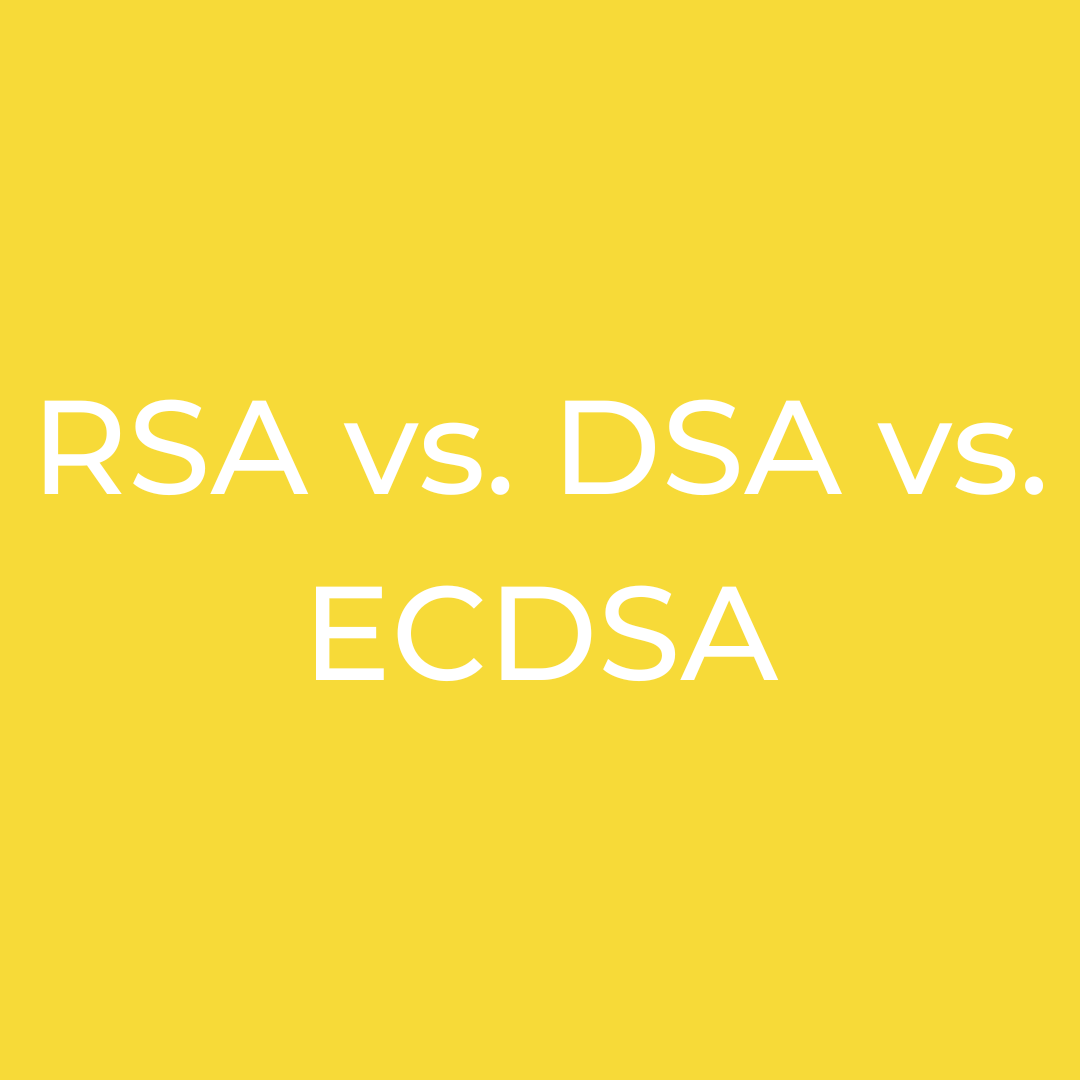Public key cryptography is an essential tool for securing digital communications and transactions. It relies on mathematical algorithms to create public and private keys that can be used to encrypt and decrypt messages, as well as verify digital signatures. Three popular public key algorithms are RSA, DSA, and ECDSA.
Introduction to Public Key Cryptography
Public key cryptography is a system of encryption that uses two keys: a public key and a private key. The public key is available to anyone who wants to send an encrypted message to the owner of the private key. The private key is kept secret and is used to decrypt the message.
Public key cryptography provides several advantages over symmetric key cryptography, which uses the same key for both encryption and decryption. In a symmetric key system, the key must be kept secret and shared between the sender and receiver, which can be difficult to manage in large networks. In a public key system, the public key can be shared widely, while the private key remains secret.
RSA
RSA is one of the most widely used public key algorithms. It was first introduced in 1977 by Ron Rivest, Adi Shamir, and Leonard Adleman. RSA derives its security from the difficulty of factoring large numbers into their prime factors.
RSA works by generating a public key and a private key that are mathematically related. The public key consists of a modulus, which is the product of two large prime numbers, and an exponent. The private key consists of the same modulus and a different exponent.
To encrypt a message using RSA, the sender uses the recipient's public key to perform the encryption. To decrypt the message, the recipient uses their private key to reverse the encryption process. RSA can also be used to create digital signatures, which provide a way to verify the authenticity of a message.
One potential disadvantage of RSA is that it requires the use of large keys to ensure security. As computing power increases, the size of the keys needed for RSA encryption also increases.
DSA
DSA, or Digital Signature Algorithm, is a public key algorithm designed specifically for creating digital signatures. It was first introduced in 1991 by the National Institute of Standards and Technology (NIST) in the United States.
DSA works by generating a public key and a private key that are mathematically related. The public key consists of a prime number and a generator. The private key consists of a random number.
To create a digital signature using DSA, the sender uses their private key to generate a signature that is attached to the message. The recipient can then use the sender's public key to verify the authenticity of the signature.
One potential disadvantage of DSA is that it is not well-suited for encryption, as it can only be used to create digital signatures.
ECDSA
ECDSA, or Elliptic Curve Digital Signature Algorithm, is a public key algorithm that is similar to DSA but is based on elliptic curve cryptography. It was first introduced in 1999 by Scott Vanstone and is widely used in applications such as Bitcoin and Ethereum.
ECDSA works by generating a public key and a private key that are mathematically related. The public key consists of a point on an elliptic curve, while the private key consists of a random number.
To create a digital signature using ECDSA, the sender uses their private key to generate a signature that is attached to the message. The recipient can then use the sender's public key to verify the authenticity of the signature.
One advantage of ECDSA over RSA and DSA is that it provides equivalent security with smaller key sizes. This can be important for applications where computational resources are limited.
Comparing RSA, DSA, and ECDSA
RSA is a versatile algorithm that can be used for general-purpose cryptography, including encryption and digital signatures. It is well-suited for applications where key sizes are not a concern.
DSA is specifically designed for creating digital signatures and is not well-suited for encryption. It has smaller key sizes than RSA, which can be advantageous in some applications.
ECDSA is similar to DSA but is based on elliptic curve cryptography. It provides equivalent security with smaller key sizes, making it a good choice for digital signatures in constrained environments.
Conclusion
RSA, DSA, and ECDSA are all important public key algorithms that are used to secure digital communications and transactions. Each algorithm has its own strengths and weaknesses, and the best choice depends on the specific requirements of the application.
RSA is a versatile algorithm that can be used for general-purpose cryptography, including encryption and digital signatures. DSA is specifically designed for creating digital signatures and has smaller key sizes than RSA. ECDSA is similar to DSA but uses elliptic curve cryptography and provides equivalent security with smaller key sizes.
When choosing an algorithm, it's important to consider factors such as key size, computational resources, and the specific use case.
Sources:
- "Introduction to Cryptography" by Christof Paar and Jan Pelzl: This is a great textbook that provides a detailed introduction to cryptography and covers the basics of RSA, DSA, and ECDSA.
- "Applied Cryptography" by Bruce Schneier: This is another classic book on cryptography that covers many different algorithms, including RSA, DSA, and ECDSA.
- "Elliptic Curve Cryptography: a gentle introduction" by Andrea Corbellini: This is a great introduction to elliptic curve cryptography, which is the basis for ECDSA.


